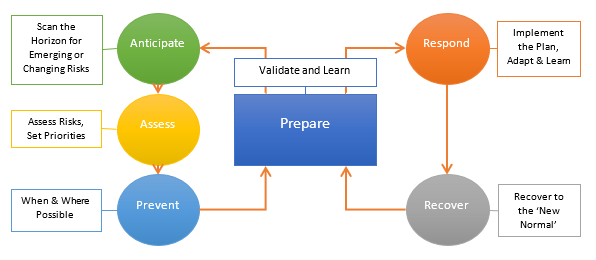
Working here at the EPC is a privilege because we get to work with many different industries and organisations across the public, private and not-for-profit sectors. We get to meet professional groups and commercial organisations which are trying to make a difference. We get to hear of the latest news and issues first-hand. Something that concerns us now is the news of local Safety Advisory Groups (which co-ordinate the multi-agency approach to safety at large public events) being wound up in some areas. Is that, well…safe?
We think not. The events industry is busy, highly dynamic and new lessons are being identified all the time. Every such gathering, event or festival has serious risks that must be collectively managed. Also, our crowded places are more crowded than ever and therefore riskier in many respects. Thinking back; reflect on the UK’s 'Decade of Disaster', how many of them involved or occurred in crowded places and how that trend has continued since then – right up to the Manchester Arena atrocity.
One of the key issues for us is that no single agency co-ordinates learning, development and standards in the event industry nationally. There is no analogue of the Civil Contingencies Secretariat for the events business. What we have instead is a patchwork of different agencies doing (great) things separately and developing useful guidance (separately). This is progress by (sometimes disjointed) incrementalism, not by coherent strategy at the multi-agency level.
So, if that’s the national picture, and we think it is, it seems even more risky to abandon the practice of having multi-agency Safety Advisory Groups at the local level. We suspect that the reason is the predictable one: increasing numbers of things to do and diminishing resources, leading to difficult decisions about what to stop doing.
Perhaps it hasn’t helped that crowd and event safety is at least partly fenced off from the mainstream of 'civil protection'. This is even though Local Resilience Forum members and assets will be central to any response if things go badly wrong. It’s no accident that the EPC approach for years has been to advocate the Integrated Safety Management model. And yes, it should look familiar – it’s also known as Integrated Emergency Management, the basic instrument of civil protection and emergency management. What we’ve been trying to achieve is the same thing – a standard basic approach which is the first step towards a more coherent family of guidance and standards for the crowds and event world.

Back at the turn of the century, the responsibility for civil protection was transferred from the Home Office to the Cabinet Office precisely because it needs unified cross-government co-ordination – as well as someone to 'own' its framework legislation. The risks of crowds and events don’t have that single home in government, so it’s less than surprising that it also lacks formal common statements of practice – what some in civil protection call its 'doctrine and standards'.